#McKinley Freeman
Text
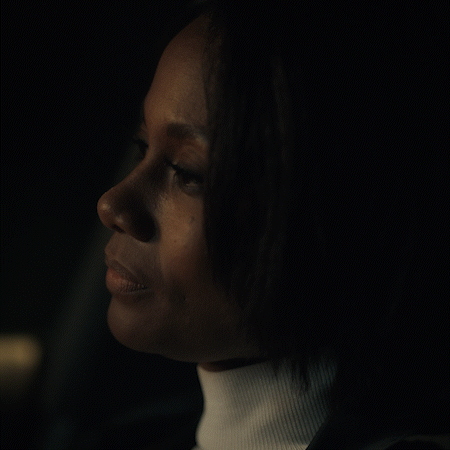
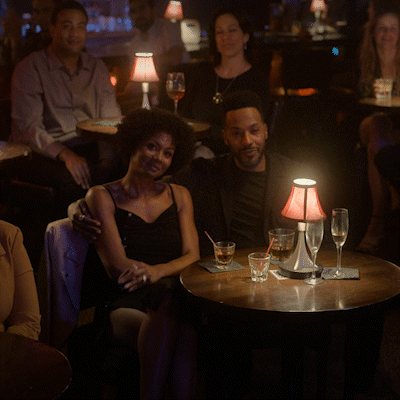
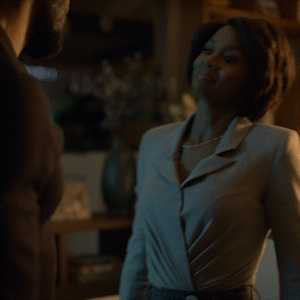


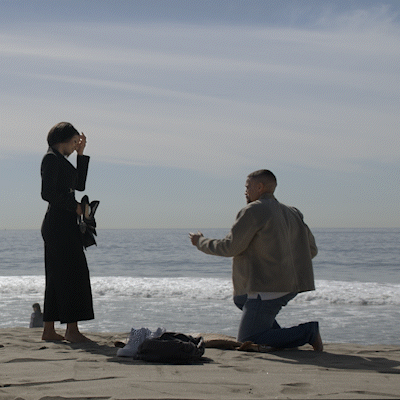
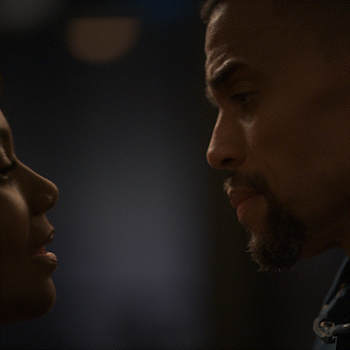

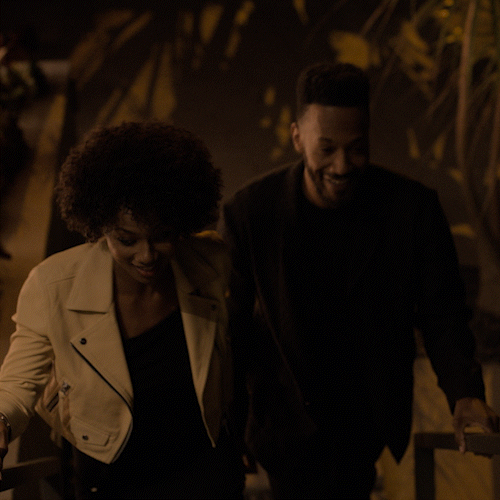

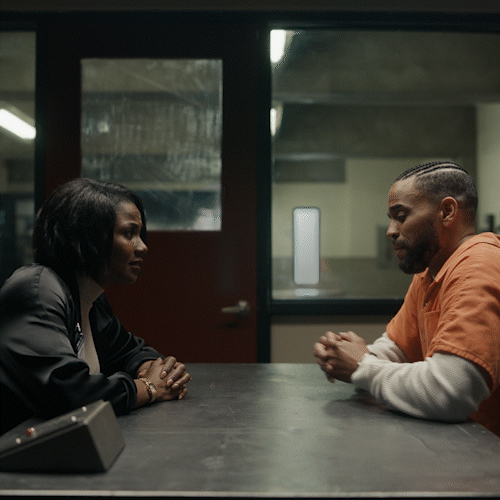
Reasonable Doubt + Romance
#Reasonable Doubt#Emayatzy Corinealdi#McKinley Freeman#Michael Ealy#Love#Relationships#Chemistry#Emotion
3 notes
·
View notes
Photo





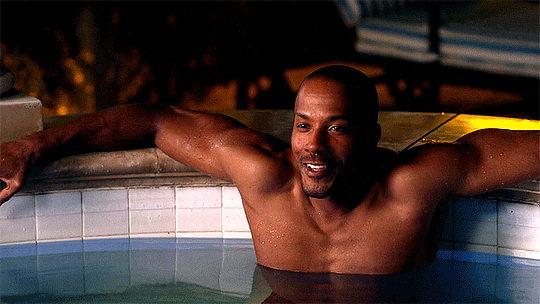



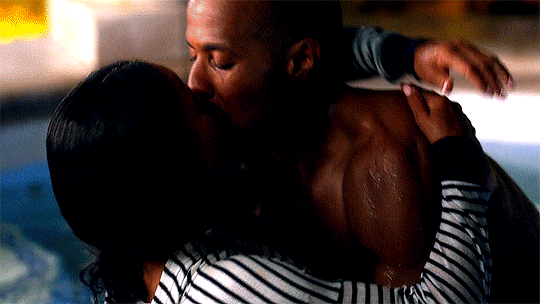
ultimate ship meme // kisses
↳ Ahsha Hayes & Derek Roman (Hit the Floor)
#hit the floor#htfedit#tvedit#taylour paige#mckinley freeman#ahsha hayes#derek roman#ahsha x derek#hittheflooredit#mygraphics#gif#usm
46 notes
·
View notes
Text
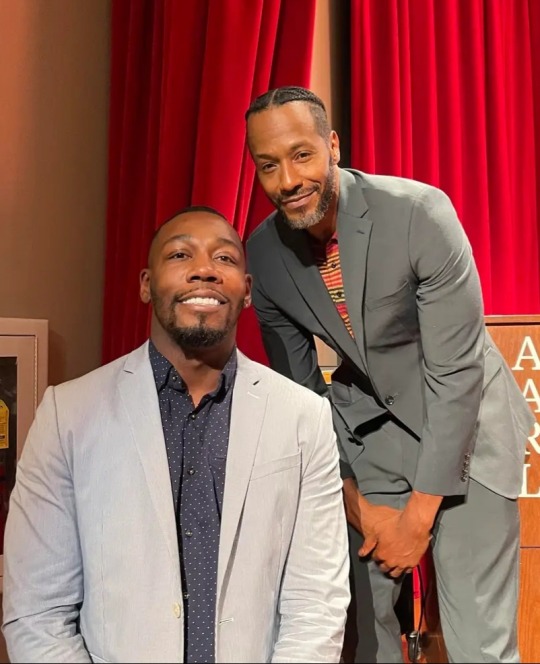
#mckinley freeman#actor#suit#suits#open shirt#style#sharp#sexy#handsome#suave#men's fashion#phyne#attractive#fine#hit the floor#reasonable doubt
16 notes
·
View notes
Text
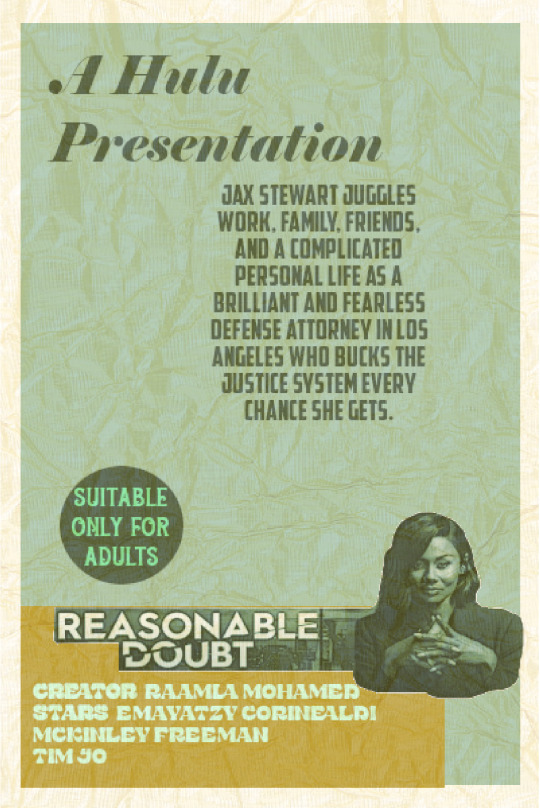
#reasonable doubt#tv shows#hulu#raamla mohamed#emayatzy corinealdi#mckinley freeman#tim jo#illustration#vintage art#alternative movie posters
0 notes
Text
The Cast of 'Reasonable Doubt' Discuss Inspiration, Collaboration, and Creativity
The Cast of ‘Reasonable Doubt’ Discuss Inspiration, Collaboration, and Creativity
Onyx Collective’s new stellar legal drama, Reasonable Doubt is set to premiere on Tuesday, September 27 on Hulu. From executive producer Kerry Washington, Reasonable doubt is loosely based on the incredibly talented celebrity attorney Shawn Holley, and follows Jacqueline “Jax” Stewart, a premier criminal defense lawyer from L.A. as she battles the justice system while trying to deal with a…

View On WordPress
#Angela Grovey#Blackness#Disney#Emayatzy Corinealdi#Hulu#Interview#Kerry Washington#McKinley Freeman#Michael Ealy#Onyx Collective#Raamla Mohamed#Reasonable Doubt#Sean Patrick Thomas#Streaming#Tim Jo
0 notes
Photo





These have been in my drafts since a snow day back in January lol Thank you to @nonsimsical for these beautiful edits! Our babies had quite an adventure during their winter wonderland trip! ❄☃💙
#the blake legacy#emma blake#ree blake#freeman blake#Theo Bartolini#Cora Bartolini#Myles McKinley#Maisyn McKinley#nonsimsical
16 notes
·
View notes
Text
Civil War (2024) Review
A journey across a dystopian future America that is currently in a civil war as we follow military journalists wanting to get to the White House to confront the President before the rebel factions.
⭐️⭐️⭐️⭐️
Continue reading Civil War (2024) Review

View On WordPress
#2024#Alex Garland#Alexa Mansour#Cailee Spaeny#Cinema#Civil War#Dean Grimes#Evan Lai#Greg Hill#James Yaegashi#Jefferson White#Jess Matney#Jesse Plemons#Justin James Boykin#Kirsten Dunst#Nelson Lee#Nick Offerman#Review#Simoen Freeman#Stephen McKinley Henderson#Tim James#Vince Pisani#Wagner Moura
0 notes
Text
Masterlist part 2
Winslow Foxworth "Foxy" Coltrane (3 from Hell)
Collaring headcanons
Pet names
Helping author S/O with writer's block
Pinhead (Hellraiser)
Hugs
Pet names
Reader who uses a binder
Reader getting an abortion
Hierophilia / blasphemy kink
Going with his S/O to get a piercing
Kissing him in panic before he kills you
Male reader spraining ankle
Kurt Kunkle (Spree)
NSFW with a dominant male reader
S/O telling him that he's looking submissive and breedable
S/O calling him babygirl
Adam Faulkner-Stanheight (Saw)
Breathplay
S/O who wants to ride his thigh
S/O telling him that he's looking submissive and breedable
S/O calling him babygirl
Celebrating his S/O's birthday
Kinktober Day 3: Brat Taming
Lawrence Gordon (Saw)
S/O who wants to ride his thigh
Orgasm denial with a dominant reader
Collaring & praise with male reader
Peter Strahm (Saw)
Brat!Reader
NSFW with a dominant male reader
Punishing bratty female reader
Mark Hoffman (Saw)
Pegging
Mommy kink
Thigh riding
Having sex after working on a trap with male reader
Petplay with dominant reader
Praise and degradation with female reader
Submissive Mark with dominant hypnotist female reader
Amanda Young (Saw)
S/O who wants to ride her thigh
Rusty Nail (Joyride)
AFAB!Reader who dislikes anyone touching her hips
Jealous sex
Fluff with overworked reader
Housewife reader
Theatre actress reader
Relationship headcanons
Female! S/O into pet play
Dirty talking over CB radio
Ash Williams (Evil Dead)
Wholesome taking a bath with him
Sharing a bed with him
Overstimulation with submissive reader
Daddy kink + dirty talk
Celebrating his S/O's birthday
S/O who survived the cabin with him
Female!Reader who is obsessed with fantasy things
Ian McKinley (Final Destination 3)
Staying cool in summer with reader
Yandere! Ian McKinley
Patrick Hockstetter (IT 2019)
Choking kink headcanons
The Man (Hush 2016)
NSFW short fic
Punishments, giving & receiving
Arkin O'Brien (The Collector)
NSFW headcanons
Hugs
Pet names
Jason Voorhees (Friday The Thirteenth)
S/O with ulcerative colitis
Candyman / Daniel Robitaille (Candyman)
Kissing him in panic before he kills you (short fic)
Pet names
Kinktober Day 1 : Body Worship
Thomas Hewitt (TCM remake)
You wearing his shirt and nothing under it
Reader getting an abortion
S/O who gets giggly and flustered at cuddles & kisses
AFAB!Reader who dislikes anyone touching her hips
Kissing him in panic before he kills you
Animalistic killer partner
Cockwarming
Offering him sexual favours so he'll let you live
Holding his S/0
Chubby/fat S/O
Bubba Sawyer (TCM)
Animalistic killer partner
Amber Freeman (Scream 5)
Hugs
Fluff
Richie Kirsch (Scream 5)
Hugs
Gabriel May (Malignant)
Voice kink & possessive praise
Giving AFAB! S/O oral
Billy Lenz (Black Christmas)
Smut drabble
Rick Grimes (The Walking Dead)
NSFW headcanons
Being protective over his girlfriend
Rough sex with female reader
Negan Smith (The Walking Dead)
Celebrating his S/O's birthday
Daryl Dixon (The Walking Dead)
Dominant male!reader praising him during sex after he degrades himself
Eddie Munson (Stranger Things)
Vampire Eddie fic
Miscellaneous / General
Date night - choose your own slasher date masterlist
Being an honorary member of the Firefly family
Some thoughts on the collector+collection
Slasher positivity
Ghostface thirst
Housewife/domestic with the slashers
House of Wax Vampire AU - teaser fic and original concept
#imelda's masterlist#kurt kunkle#spree#spree 2020#saw 2004#3 from hell#rob zombie#imelda's writing#saw#amanda young#lawrence gordon#mark hoffman#ash williams#evil dead#the collector#hellraiser#pinhead#candyman#the texas chainsaw massacre#texas chainsaw massacre#thomas hewitt#eddie munson#stranger things
136 notes
·
View notes
Text
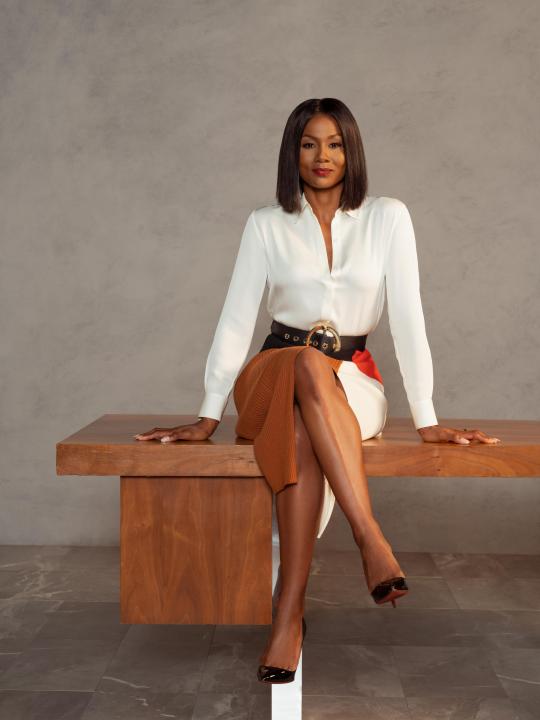


Reasonable Doubt.
Emayatzy Corinealdi, McKinley Freeman, Michael Ealy.
#michael ealy#McKinley freeman#emayatzy corinealdi#reasonable doubt#reasonabledoubthulu#hulu#onyx collective#cast#season 2
2 notes
·
View notes
Photo
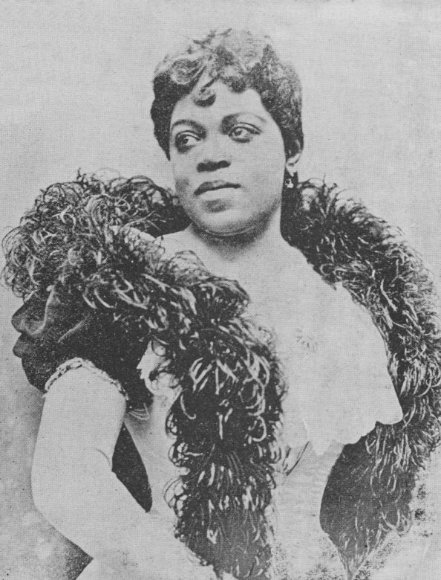

Matilda Sissieretta Joyner Jones, known as Sissieretta Jones, (January 5, 1868 or 1869[1] – June 24, 1933[2]) was an African-American soprano. She sometimes was called “The Black Patti” in reference to Italian opera singerAdelina Patti. Jones’ repertoire included grand opera, light opera, and popular music.[3]
Matilda Sissieretta Joyner was born in Portsmouth, Virginia, United States, to Jeremiah Malachi Joyner, an African Methodist Episcopal minister, and Henrietta Beale.[2] By 1876 her family moved to Providence, Rhode Island,[4]where she began singing at an early age in her father’s Pond Street Baptist Church.[2]
In 1883, Joyner began the formal study of music at the Providence Academy of Music. The same year she married David Richard Jones, a news dealer and hotel bellman. In the late 1880s, Jones was accepted at the New England Conservatory of Music.[1] On October 29, 1885, Jones gave a solo performance in Providence as an opening act to a production of Richard IIIput on by John A. Arneaux‘s theatre troupe.[5] In 1887, she performed at Boston’s Music Hall before an audience of 5,000.[2]
Jones made her New York debut on April 5, 1888, at Steinway Hall.[1] During a performance at Wallack’s Theater in New York, Jones came to the attention of Adelina Patti’s manager, who recommended that Jones tour the West Indies with the Fisk Jubilee Singers.[2] Jones made successful tours of the Caribbean in 1888 and 1892.[1]
In February 1892, Jones performed at the White House for PresidentBenjamin Harrison.[2] She eventually sang for four consecutive presidents — Harrison, Grover Cleveland, William McKinley, and Theodore Roosevelt— and the British royal family.[1][2][3]
Jones performed at the Grand Negro Jubilee at New York’s Madison Square Garden in April 1892 before an audience of 75,000. She sang the song “Swanee River” and selections from La traviata.[3] She was so popular that she was invited to perform at the Pittsburgh Exposition (1892) and the World’s Columbian Exposition in Chicago (1893).[4]
In June 1892, Jones became the first African-American to sing at the Music Hall in New York (renamed Carnegie Hall the following year).[1][7] Among the selections in her program were Charles Gounod‘s “Ave Maria” and Giuseppe Verdi‘s “Sempre libera” (from La traviata).[1] The New York Echowrote of her performance at the Music Hall: “If Mme Jones is not the equal of Adelina Patti, she at least can come nearer it than anything the American public has heard. Her notes are as clear as a mockingbird’s and her annunciation perfect.”[1] On June 8, 1892, her career elevated beyond primary ethnic communities, and was furthered when she received a contract, with the possibility of a two-year extension, for $150 per week (plus expenses) with Mayor James B. Pond, who had meaningful affiliations to many authors and musicians.[8] The company Troubadours made an important statement about the capabilities of black performers, that besides minstrelsy, there were other areas of genre and style.[8]
In 1893, Jones met composer Antonín Dvořák, and in January 1894 she performed parts of his Symphony No. 9 at Madison Square Garden. Dvořák wrote a solo part for Jones.[1]
Jones met with international success. Besides the United States and the West Indies, Jones toured in South America, Australia, India, and southern Africa.[1] During a European tour in 1895 and 1896, Jones performed in London, Paris, Berlin, Cologne, Munich, Milan, and Saint Petersburg.[9]
In 1896, Jones returned to Providence to care for her mother, who had become ill.[1] Jones found that access to most American classical concert halls was limited by racism. She formed the Black Patti Troubadours (later renamed the Black Patti Musical Comedy Company), a musical and acrobatic act made up of 40 jugglers, comedians, dancers and a chorus of 40 trained singers.[2] The Indianapolis Freeman reviewed the “Black Patti Troubadours” with the following: “The rendition which she and the entire company give of this reportorial opera selection is said to be incomparably grand. Not only is the solo singing of the highest order, but the choruses are rendered with a spirit and musical finish which never fail to excite genuine enthusiasm.[10]
The revue paired Jones with rising vaudeville composers Bob Cole and Billy Johnson. The show consisted of a musical skit, followed by a series of short songs and acrobatic performances. During the final third of each show, Jones performed arias and operatic excerpts.[9] The revue provided Jones with a comfortable income, reportedly in excess of $20,000 per year. She led the company with reassurance of a forty-week season that would give her a sustainable income, guaranteed lodging in a well-appointed and stylish Pullman car, and the ability to sing opera and operetta excerpts in the final section of the show.[8] This allowed Jones to be the highest paid African American performer of her time.[8] Jones sung passionately and pursued her career choice of opera and different repertory regardless to her lack of audience attendance.[8] For more than two decades, Jones remained the star of the Famous Troubadours, while they graciously toured every season and established their popularity in the principal cities of the United States and Canada.[11] Although their eventual fame and international tours collected many audiences, they began with a “free-for-all” variety production with plenty of “low” comedy, song and dance, and no pretense of a coherent story line.[12]
Several members of the troupe, such as Bert Williams, went on to become famous.[1] April 1908, at the Avenue Theatre in Louisville, Kentucky, an audience made up mostly of whites (segregated seating was still prevalent), accepted Madam ‘Patti’ after singing ‘My Old Kentucky Home’ with much respect and admiration, and marked “the first time that a colored performer received a bouquet at the theatre in this city”.[12] For almost ten years, racial segregation had kept Jones from the mainstream opera platform, but by singing selections from operas within the context of a hard-traveling minstrel and variety show, she was still able to utilize her gifted voice, that people of all races loved.[12] The Black Patti Troubadours reveled in vernacular music and dance.[12]
Jones retired from performing in 1915 because her mother fell ill, so she moved back to Rhode Island to take care of her. For more than two decades, Jones remained the star of the Famous Troubadours, while they graciously toured every season and established their popularity in the principal cities of the United States and Canada.[12] She devoted the remainder of her life to her church and to caring for her mother. Jones was forced to sell most of her property to survive.[1][2] She died in poverty on June 24, 1933 from cancer. She is buried in her hometown at Grace Church Cemetery.[2]
In 2013 Jones was inducted into the Rhode Island Music Hall of Fame.[13]
Source: https://en.wikipedia.org/wiki/Matilda_Sissieretta_Joyner_Jones
Photos from Wiki Commons
#sissieretta black patti jones#blackherstory#black womens history#lightopera#popularmusic#grandopera
11 notes
·
View notes
Note
mw characters?

we would love to see gene belcher, linda belcher, all three pesto kids, rudy stieblitz, and tammy larsen from bob's burgers
alex browning, clear rivers, ian mckinley, wendy christiansen, terry chaney, ashley freund, and ashlyn halperin from final destination
stu macher, billy loomis, wes hicks, tara carpenter, and amber freeman from scream
huey duck, webby vanderquack, and lena sabrewing from ducktales
will byers, jonathan byers, steve harrington, and eddie munson from stranger things
also more horror muses in general, especially adam from the saw movies, nancy thompson from nightmare on elm strees, and tree gelbman!!
also the the rest of the groups we have would be cool, like from paper girls, the quarry, and the loser's club from stephen king's it
in honor of never have i ever we would love to see devi vishwakumar, ben gross, fabiola torres, eleanor wong, and paxton hall-yoshida
marissa cooper, ryan atwood, seth cohen, summer roberts, sandy cohen, taylor townsend, lindsay gardner, alex kelly, and zach stevens from the oc
luke cage, danny rand, frank castle, moon knight, thor odinson, dazzler, bucky barnes, darcy lewis, peter parker, riri williams, and america chavez from marvel
dick grayson, damian wayne, stephanie brown, roy harper, oliver queen, dinah lance, cassandra cain, rachel roth, and garfield logan from dc
nanno and tk from girl from nowhere
the gallaghers from shameless
the bridgertons, kate and edwina sharma, sophie beckett, lucy abernathy, and penelope featherington from julia quinn's horny novels
rick grimes, michonne, daryl dixon, carl grimes, carol peletier, maggie greene, beth greene, rosita espinosa, tara chambler, enid, and cyndie from the walking dead
i also know our members would love anyone from any prior most wanted ask!
2 notes
·
View notes
Text
LÉGENDES DU JAZZ
RED NICHOLS, POUR UN PENNY DE PLUS
‘’Much of his vast recorded output was released in Europe, where he was regarded by early jazz critics as the equal, if not the superior, of Louis Armstrong and Bix Beiderbecke (...). Nichols' chief fault was an overly stiff, academic approach to jazz trumpet, but he did recognize merit as far as other jazz musicians were concerned and made some wonderful small group recordings.’’
-Michael Brooks
Né le 8 mai 1905 à Ogden, en Utah, Ernest Loring "Red" Nichols était le fils d’un professeur de musique. Enfant prodige, Nichols avait commencé à jouer du cornet à l’âge de cinq ans.
Nichols a joué avec le groupe de son père à partir de l’âge de douze ans. Nichols a été fortement influencé par Original Dixieland Jazz Band puis par Bix Beiderbecke. Nichols avait entendu Beiderbecke jouer pour la première fois sur un enregistrement de George Olsen intitulé ‘’You’ll Never Get To Heaven With Those Eyes.’’ Nichols a également joué une transcription du solo de Beiderbecke sur le classique “Jazz Me Blues” qui avait été enregistré le 18 février 1924.
Durant une partie de l’année 1920, Nichols avait étudié à la Culver Military Academy, dont il avait été expulsé, à l'instar de son idole Bix Beiderbecke.
DÉBUTS DE CARRIÈRE
Au début des années 1920, Nichols s’est installé dans le Midwest. Le 25 mai 1923, à l’âge de dix-sept ans, Nichols avait fait ses débuts sur disque avec le groupe Syncopating Five d’Howard Lanin. Nichols avait éventuellement pris la direction du groupe qui avait été rebaptisé le Royal Palms Orchestra. Le groupe s’était particulièrement produit sur la Côte est, et plus particulièment à Atlantic City.
Même s’il avait enregistré deux chansons avec Howard Lanin en mai 1923, c’est surtout après avoir été associé au frère d’Howard, Sam Lanin, que la carrière de Nichols avait vraiment décollé.
Après le démantèlement du Royal Palms Orchestra, Nichols a fait partie du Johnny Johnson Orchestra avec lequel il s’était installé à New York en 1923. À New York, Nichols avait rencontré le joueur de trombone Miff Mole, avec qui il avait joué durant une dizaine d’années. Avant de signer un contrat avec les disques Brunswick, Nichols et Mole, qui étaient devenus inséparables, avaient enregistré avec Pathé-Perfect sous le nom de Red Heads. En plus de Mole (qui avait participé à la plupart des enregistrements de Nichols en 1927-28 avant de se lancer dans une carrière de musicien de studio), Nichols avait également collaboré avec de futurs grands noms du jazz comme Glenn Miller, Jack Teagarden, Tommy Dorsey et Will Bradley au trombone, Pee Wee Russell, Benny Goodman et Frank Teschemacher à la clarinette, Bud Freeman, Eddie Miller, Babe Russin et Fud Livingston au saxophone ténor, Frankie Trumbauer au C-melody saxophone, Charlie Teagarden et Wingy Manone à la trompette, Dudley Fosdick au mellophone, Adrian Rollini au saxophone basse, Dick McDonough, Carl Kress et Eddie Condon à la guitare, Lennie Hayton, Joe Sullivan, Rube Bloom et Roy Bargy au piano, Joe Venuti au violon, Joe Tarto au tuba, Artie Bernstein à la contrebasse, Red McKenzie au chant et Gene Krupa, Chauncey Morehouse, Stan King, Dave Tough, Ray Bauduc et Ray McKinley à la batterie. Dans le film biographique ’’The Five Pennies’’, le personnage de Nichols prononçait souvent la réplique “Don’t worry, someday they’ll all be working for me.” Ironiquement, malgré le nombre impressionnant de futurs chefs d’orchestres qui avaient fait partie de son groupe, Nichols n’avait jamais vraiment connu de succès comme leader de ses propres formations à l’époque du swing.
Au début de sa carrière, Nichols avait également enregistré avec les disques Edison (1926), Victor (1927, 1928, 1930, 1931), Bluebird (1934, 1939), Variety (1937) et Okeh (1940). Parmi les nombreux artistes ou groupes avec lesquels Nichols avait enregistré de 1924 à 1926, on remarquait les Bailey’s Lucky Seven, les Charleston Seven, le Goofus Five, les Tennessee Tooters, le Lou Gold, les Melody Sheiks, les California Ramblers, les Lanin’s Red Heads, le Varsity Eight, les Five Birmingham Babies, Billy Wynne, les Little Ramblers, Bill Wirges, les Georgians, les Seven Missing Links, Ross Gorman, les Cotton Pickers, les Hottentots, Cliff Edwards, Ipana Troubadours, les Walter Davidson’s Louisville Loons, le Original Memphis Five, les Broadway Bellhops, Bob Haring, Arnold Brilhart, Little Pilgrims Orchestra, Frank Signorelli, Jay C. Flippen, Jack Albin, Annette Hanshaw, Don Voorhees, John Clesi’s Areoleans, Evelyn Preer et Lee Morse, et on ne parlait que des formations orientées vers le jazz.
Nichols, qui savait lire la musique, avait facilement obtenu du travail comme musicien de studio. En décembre 1926, Nichols avait commencé à enregistrer avec Mole dans le cadre de différentes formations connues sous le nom de Red Nichols and His Five Pennies. En réalité, le nom du groupe était un peu trompeur, car très peu de ces formations étaient des quintets. Parmi les membres du groupe, on remarquait Jimmy Dorsey à la clarinette et au saxophone alto, Vic Berton (un batteur qui pensait comme un percussionniste et jouait parfois du tympani), Eddie Lang à la guitare et Arthur Schutt au piano.
Nichols a enregistré plus de cent pièces avec les Five Pennies pour les disques Brunswick. Même si la taille du groupe avait évolué avec les années, son nom était demeuré échangé. De 1926 à 1932, Nichols a également enregistré avec les Arkansas Travelers, les California Red Heads, les Louisiana Rhythm Kings, le Wabash Dance Orchestra, les Alabama Red Peppers, les Charleston Chasers, les Red and Miff's Stompers et les Miff Mole and His Little Molers. Nichols avait aussi dirigé des groupes plus importants sur certains enregistrements et dans le cadre des revues ‘’Strike Up The Band’’ et ‘’Girl Crazy.’’
Extrêmement prolifique, Nichols enregistrait parfois une vingtaine de pièces par semaine.
En plus de Nichols au cornet, de Mole et de Jimmy Dorsey au saxophone alto et à la clarinette, le groupe de Nichols avait été notamment composé au cours de la décennie suivante de Benny Goodman à la clarinette, de Glenn Miller et Jack Teagarden au trombone, de Pee Wee Russell à la clarinette, de Joe Venuti au violon, d’Eddie Lang au banjo et à la guitare et de Gene Krupa à la batterie. Le groupe avait connu un succès inattendu avec la pièce "Ida, Sweet as Apple Cider", qui s’était vendue à plus d’un million de copies et s’était mérité un disque d’or de la Recording Industry Association of America. La composition de Nichols intitulée "Nervous Charlie Stomp" avait même été enregistrée par l’orchestre de Fletcher Henderson.
En 1927, Nichols avait passé quelques mois dans l’orchestre de Paul Whiteman. Son remplaçant était nul autre que son idole Bix Beiderbecke.
À la fin des années 1920, Nichols a également enregistré avec les Miff Mole’s Molers, Peggy English, Carl Fenton, Sophie Tucker, Art Gillham, Cass Hagan’s Park Central Hotel Orchestra, the Midnight Airedales, Irving Brodsky et les Red Hot Dogs. En plus de jouer du cornet, Nichols était un arrangeur imaginatif qui, un peu comme Jelly Roll Morton, avait le don de combiner des musiciens établis avec des groupes spécialement réunis pour l’occasion. Les arrangements de Nichols étaient d’une telle qualité qu’il devait souvent faire appel aux meilleurs musiciens disponibles.
Dans les années 1930, Nichols avait tenté de s’adapter au swing alors en effervescence, mais il avait beaucoup moins enregistré à partir de 1932. Nichols n’avait même pas enregistré du tout en 1933. L’année suivante, Nichols avait dirigé un groupe de onze musiciens appelé His World Famous Pennies. À la même époque, Nichols avait aussi dirigé des orchestres anonymes à la radio. Désormais considéré comme une relique du passé, Nichols avait été progressivement abandonné par ses musiciens qui avaient décidé de lancer leurs propres groupes. Le critique Michael Brooks écrivait:
‘’What went wrong? Part of it was too much, too soon. Much of his vast recorded output was released in Europe, where he was regarded by early jazz critics as the equal, if not the superior, of Louis Armstrong and Bix Beiderbecke. People who make fools of themselves usually find a scapegoat, and when the critics were exposed to the music of Duke Ellington, Benny Carter, Coleman Hawkins and others they turned on Nichols and savaged him, trashing him as unfairly as they had revered him. Nichols' chief fault was an overly stiff, academic approach to jazz trumpet, but he did recognize merit as far as other jazz musicians were concerned and made some wonderful small group recordings.’’
Durant la Crise des années 1930, Nichols avait gagné sa vie en se produisant dans des revues. Pendant un certain temps, Nichols avait aussi dirigé l’orchestre de Bob Hope, avant de s’installer en Californie.
Nichols avait épousé Willa Stutsman, une danseuse de la revue Scandals de George White, avec qui il avait eu une fille. En 1942, la fille du couple avait contracté la poliomyélite après qu’on lui ait diagnostiqué une méningite spinale. Jusqu’en 1943, on avait perdu toute trace de Nichols, qui s’était trouvé un emploi dans les chantiers maritimes afin de pouvoir mieux s’occuper de la santé de sa fille. Après s’être produit au Merry-Go-Round à Dayton, dans l’État de l’Ohio, Nichols avait fait son service militaire dans le cadre de la Seconde Guerre mondiale.
DERNIÈRES ANNÉES
En 1944, Nichols, qui n’avait rien perdu de son habileté au cornet à l’âge de trente-neuf ans, avait tenté un retour sur scène. Après avoir joué avec le Casa Loma Orchestra durant quelques mois, Nichols avait formé une nouvelle version de son groupe les Five Pennies, cette fois sous la forme d’un sextet qui s’était produit dans de petits clubs de Los Angeles. Le groupe avait joué par la suite dans de plus grandes salles comme le Zebra Room, le Tudor Room de l’Hôtel Palace à San Francisco et le Shearton de Pasadena, en Californie. À la suite du retour en force du Dixieland, Nichols avait aussi participé à des sessions avec Peggy Lee, Julia Lee, Phil Harris et Kay Starr. Il avait également fait des apparitions à la radio avec Bing Crosby.
Très populaire sur la scène locale, les Five Pennies mettaient souvent en vedette des artistes comme Heinie Beau ou Rosy McHargue à la clarinette et Herbie Haymer au saxophone ténor. L’une des pièces les plus populaires du groupe à cette époque était “Battle Hymn Of The Republic” (1949). Même si Nichols jouait parfois des arrangements innovateurs datant des années 1920, la plupart du temps le groupe interprétait une musique inspirée du Dixieland. Les Five Pennies s'étaient éventuellement dotés d'un son plus distinctif après qu’un saxophoniste basse et le joueur de trombone King Jackson se soient joints au groupe en 1949. Dans les années 1950, le groupe avait enregistré une série d’albums pour les disques Capitol, Jump et Audiophile et avait continué de se produire sur scène.
À la fin de sa carrière, Nichols a également joué le rôle d’ambassadeur de bonne volonté pour le Département d’État.
Nichols a participé à de nombreux films au cours de sa carrière. En 1929, il a joué dans un court-métrage de la compagnie Vitaphone qui mettait également en vedette son groupe les Five Pennies ainsi que les musiciens Eddie Condon and Pee Wee Russell. En 1935, Nichols a fait une apparition dans le film ‘’The Parade of the Maestros’’ aux côtés de Ferde Grofe. En 1950, Nichols a participé au tournage du film ‘’Wabash Avenue.’’ L’année suivante, Nichols avait partagé la vedette avec Mickey Rooney et Jeanne Cagney dans le film ‘’Quicksand.’’ La même année, Nichols avait également eu un petit rôle dans le film ‘’Disc Jockey’’ aux côtés de Tommy Dorsey. En 1959, Nichols avait aussi fait une apparition dans le film ‘’The Gene Krupa Story.’’
En octobre 1956, Nichols avait participé à un épisode de l’émission de télévision ‘’This Is Your Life’’, dans lequel il avait été réuni avec ses anciens collaborateurs Miff Mole, Phil Harris et Jimmy Dorsey. Ces derniers avaient d’ailleurs remercié plus tard Nichols de s’être assuré que tous les membres du groupe avaient été payés.
En juin 1965, Nichols avait obtenu un contrat pour se produire avec les Five Pennies au Mint Hotel de Las Vegas. Le 28 juin, quelques jours après avoir participé à son premier concert, Nichols avait éprouvé des douleurs à la poitrine durant son sommeil. Nichols avait appelé la réception pour obtenir du secours, mais il était déjà mort au moment de l’arrivée de l’ambulance. Il était âgé de soixante ans. Le soir-même, le groupe avait rendu hommage à Nichols en se produisant comme prévu, avec un projecteur orienté vers la chaise vide du trompettiste.
À la suite du succès de l'émission ''This is your life'', Nichols avait fait l’objet en 1959 d’une film biographique intitulé ‘’The Five Pennies.’’ Le film, qui reposait sur une vision très romancée de la vie et de la carrière de Nichols, et l’avait décrit comme un musicien irresponsable qui était la principale cause de ses propres malheurs. Le film mettait en vedette l’acteur Danny Kaye. Nichols, qui avait joué lui-même ses propres parties de cornet dans le film, avait également fait une apparition comme membre d’un groupe fictif appelé les "Clicquot Club Eskimos". Heureusement, la complicité de Nichols avec Louis Armstrong, qui avait également joué dans le film, avait contribué à contrebalancer les nombreuses erreurs historiques de la production. Par exemple, contrairement à ce que laissait entendre le film, Nichols n’avait jamais été chanteur.
Tentant par la suite de capitaliser sur le succès du film, Nichols avait enregistré d’autres disques pour Columbia. La pièce-titre de son dernier album “The Battle Hymn Of The Republic” (1959) était d’ailleurs tirée de la trame sonore du film. Par la suite, Nichols avait continué de se produire avec les Five Pennies dans la région de Los Angeles.
Le film ‘’The Five Pennies’’ avait décroché quatre nominations au gala des Academy Award. L’épouse de Kaye, Sylvia Fine, avait composé la chanson-thème du film, ainsi que d’autres pièces apparaissant dans la production. La pièce "Poor Butterfly" de Nichols a été reprise dans le film de Woody Allen ‘’Bullets Over Broadway’’, qui a été publié en 1994. On peut également entendre l’enregistrement du standard "(Back Home Again in) Indiana" dans un autre film d'Allen tourné en 1999 et intitulé ‘’Sweet and Lowdown.’’
Red Nichols a été intronisé au sein du Big Band and Jazz Hall of Fame en 1986. Compositeur prolifique, Nichols a écrit ou co-écrit plusieurs pièces, dont "Hurricane" (avec Paul Mertz), You're Breakin' Me Down" (avec Glenn Miller), "Five Pennies", "Sugar" (avec Jack Yellen, Milton Ager et Frank Crum), "Bug-A-Boo", "The Parade of the 'Pennies'", "The King Kong", "Trumpet Sobs", "Get Cannibal", "Junk Man's Blues", "Delta Roll", "Corky", "Bugler's Lament", "Nervous Charlie Stomp" (qui a été enregistrée par Fletcher Henderson), "Last Dollar", "That's No Bargain" et "Blues at Midnight".
Considéré comme un des plus grands cornettistes à avoir émergé dans les années 1920, Nichols avait été longtemps sous-estimé, à la fois en raison de sa personnalité controversée (il préparait parfois ses solos à l’avance) et parce que sa tonalité était très peut-être un peu trop influencée par le style de Bix Beiderbecke. En réalité, Nichols avait une tonalité plus cool que celle de Bix ainsi qu’un style beaucoup plus réservé.
Certains musiciens comme Eddie Condon n’avaient pas toujours été très tendres envers le jeu de Nichols. Le fait que les enregistrements de Nichols du début des années 1930 aient été mieux connus en Europe que ceux de ses compatriotes afro-américains n’avait guère contribué à le faire mieux connaître aux États-Unis. Certains des musiciens associés à Condon semblaient aussi avoir porté rancune à Nichols de son succès.
Au cours des dernières années, les disques Jazz Oracle ont publié trois coffrets de CD comprenant la quasi totalité des enregistrements de Nichols comme leader de 1926 à 1932. Même si Nichols avait été bien loin d’être un innovateur de la trempe de Louis Armstrong et de Bix Beiderbecke, il n’en était pas moins un des plus grands musiciens de l’histoire du jazz.
©-2024, tous droits réservés, Les Productions de l’Imaginaire historique
SOURCES:
‘’Red Nichols.’’ Wikipedia, 2023.
‘’Red Nichols.’’ All About Jazz, 2023.
YANOW, Scott. ‘’Profiles in Jazz: Red Nichols.’’ The Syncopated Times, 1er février 2018.
0 notes
Text
McKinley Freeman says he is all about supporting Black women
WATCH
'Black Panther: Wakanda Forever,' "P-Valley," "The Surreal Life" and more fun TV and movie releases
00:04:45
“REVOLT Black News Weekly” aired on Friday (Oct. 28) to discuss sex trafficking and the case of Pieper Lewis, the 2022 midterm elections, and “The Surreal Life,” which is making a comeback after a 16-year hiatus. REVOLT guest host Demetria Obilor led the episode titled, “Captured and Convicted: The Case of Pieper Lewis, Push to the Polls: 2022 Midterm Elections, and NLE Choppa’s Reading Revolution.”
She was joined by Journey Out case manager Tika Thornton; abolitionist organizer Paige Fernandez; anti-human trafficking strategist Ken Henry; legal analyst A.B. Burns-Tucker; candidate for U.S. Representative (R-TX) Wesley Hunt; and political analyst Jonathan Harris. REVOLT Entertainment Correspondent Kennedy Rue McCullough also brought viewers the latest in celebrity news, during which she interviewed “Living Single”star Kim Coles and “Reasonable Doubt” actor McKinley Freeman.
Obilor opened the show by discussing sex trafficking and the case of Pieper Lewis, a Black teen from Des Moines, Iowa who was found guilty of voluntary manslaughter after killing her alleged rapist. On June 1, 2020, Lewis, who was 15 at the time, stabbed 37-year-old Zachary Brooks to death after he allegedly raped her repeatedly. She was sentenced to five years of highly supervised probation and community service. She was also ordered to pay $150,000 in restitution to Brooks’ family.
Obilor led a discussion with Thornton, Fernandez and Henry to discuss the sex trafficking crisis that Black girls and women face in the U.S. Thornton, a sex trafficking survivor, believes that the criminal justice system failed Lewis by ordering her “to pay restitution to the family of a pedophile.” “This situation is basically victim-blaming. She was victimized, raped, abused, coerced into sex trafficking because of her situation,” she opined. “This story is too common. A pedophile convinced her to be a part of something that is just so incredibly heinous. When she had no other choice, she did what she needed to do to survive.”
Fernandez chimed in and stated that the criminal justice system further traumatizes and harms Black girls and women like Lewis. “Black women and Black survivors of abuse are just at a significant risk of being criminalized, of being arrested, of being incarcerated,” she proclaimed. “We see this repeatedly, specifically with Black women. The study that Georgetown conducted that showed that adults view Black girls as less innocent and more adult-like than their white peers, and we see this come through the criminal legal system constantly.”
Henry said there needs to be legislation in place to protect Black girls like Lewis from human trafficking. He explained the issue is “a lack of education,” adding, “You don’t have the right people at the table that are making the laws and things of this nature.”
Later in the show, McCullough hosted her “Entertainment Remix” segment, during which she interviewed “Reasonable Doubt” star McKinley Freeman about the Hulu legal drama series. Freeman disclosed to REVOLT that he is happy to be a part of a project that empowers Black women. “Having Black women in the driver’s seat for this story is important because first of all, Kerry Washington’s phenomenal. [The] writers are phenomenal… I’m all about supporting Black women,” he shared.
He continued, “To be in a world where you can express yourself as an actor transparently and authentically in a way that other brothers watching the show with their ladies can be like, ‘That’s me,’ that’s important.”
During the segment, McCullough also showed viewers snippets of VH1’s reboot of “The Surreal Life” starring Coles, Tamar Braxton, Dennis Rodman and August Alsina. Coles told McCullough, “I wanted to do it because of the nostalgia of it, and so I knew that it was gonna be new and fresh and exciting and uncomfortable and mostly an adventure. And who doesn’t want an opportunity to just show up just as you?”
Watch a quick clip from this week’s episode up top. Plus, be sure to catch the next installment of “REVOLT Black News Weekly” on Friday, Nov. 4, 2022 at 5 p.m. ET on REVOLT’s app.
0 notes
Text
(Continuation)
Someone said Dave East is the sexiest man alive. What!?!?! Don't get me wrong. He's not ugly, but sexiest!?!? I was immediately inspired to create MY list of 100 men who are just as sexy, if not sexier, than Dave East.
31.) Henry Simmons
32.) Boris Kodjoe
33.) McKinley Freeman
34.) Sticky Fingaz
35.) Laz Alonso
36.) Michael B. Jordan
37.) Jonathan Majors
38.) T.J. Holmes
39.) Van Jones
40.) Michael Strahan
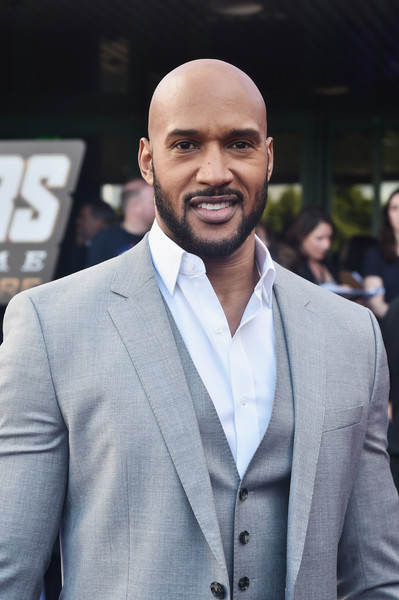

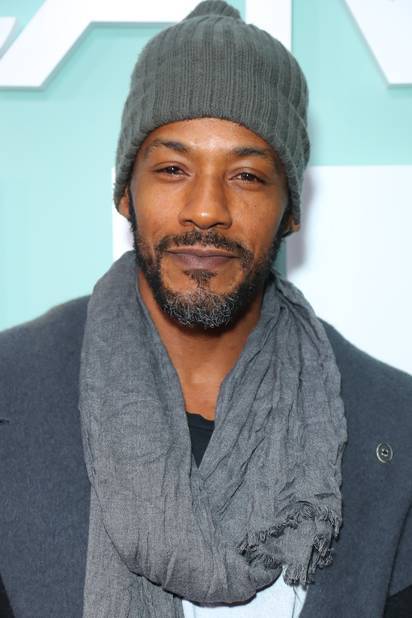
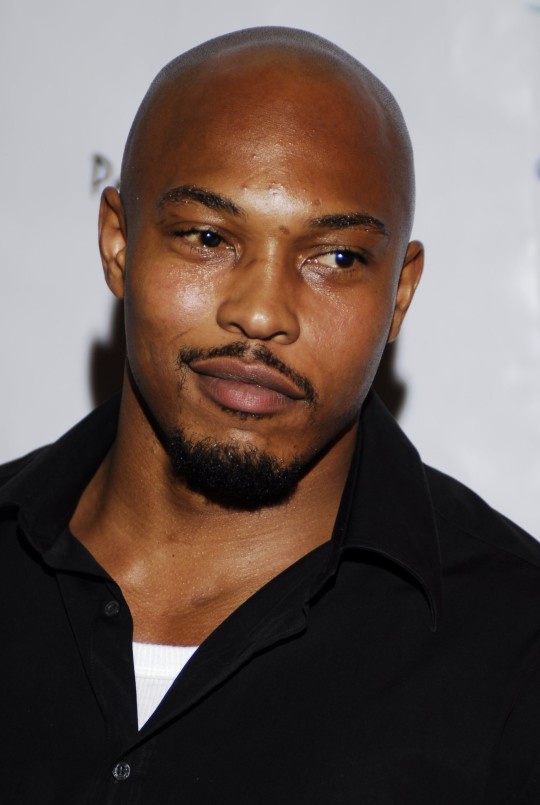
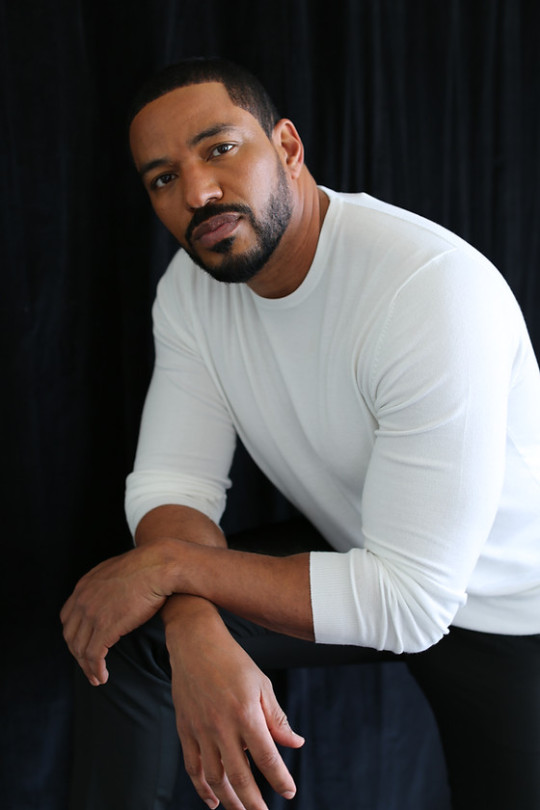


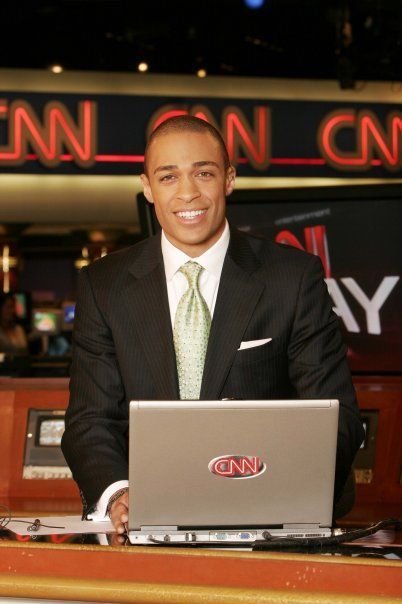

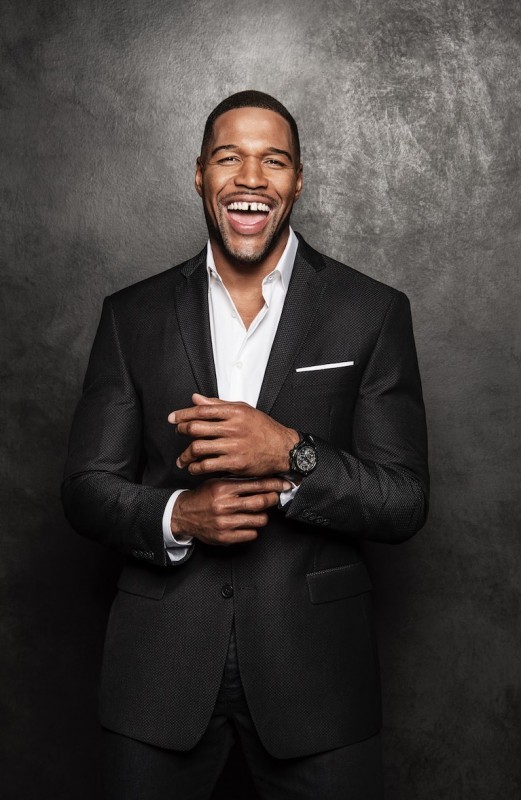
1 note
·
View note
Text
0 notes
Photo










More waterpark fun!
Side note, Dani makes the prettiest sims, like look at these models! @nonsimsical
#the sims 3#the blake family#Louie Blake#logan blake#Marley Blake#Marley McKinley#Emma Blake#Freeman Blake#ree blake#Theodora Bartolini#Theo Bartolini#Cora Bartolini#Oona Bartolini#not my sim: Oona Bartolini#Maisyn McKinley#Myles McKinley
5 notes
·
View notes